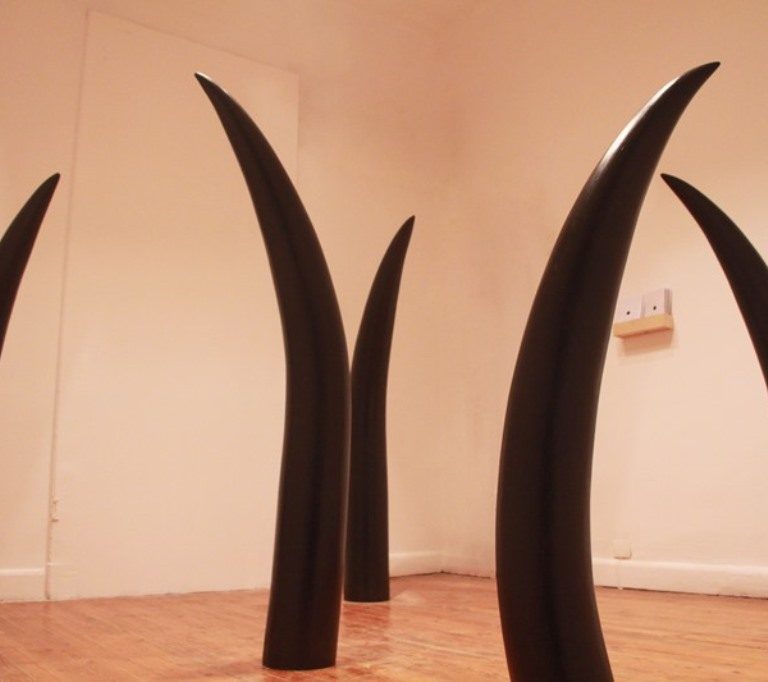no1: Black Ivory
©Alexia Clorinda, Cultural Critic/Art Historian
Installation, 2016
The Black Ivory’s installation is a struggle to excavate a counter-memory always repressed, erased, and made invisible in institutional education and in media discourse.
It enables its reader to reflect on the problem of historical experience itself and where the limits of knowing lay.
The alternative use of archives interacting with oral history tells other stories than the official sequential or ideological ones produced by institutions of power.
His work positioned the artist as a connector located at the intersection of transnational historical amnesia, discourse and theory of power/knowledge and the alternative, dispersed, fragmented sources of oral history, which comes to be representative of an untold truth: the interconnected and displaced history of kidnapping, ivory, and trade, which links at ones Sudan, Egypt, Britain, France, and Mexico.
The oral history, seen as stigmata in the Western colonial tradition, in the artist’s work lays at the foundation of a post-colonial historical rewriting and discloses the possibility of a counter-discourse, a counter-knowledge, which make connections that are otherwise hidden.
The recorded voice in Sudanese Shiluk language is one of the thousand of the kidnaped survivors forced to transport ivory from Sudan to Egypt then sold as a soldier by Britain to France to fight in colonial Mexico.
The voice, as a re-appropriating memory’s device, restores the non-sequential energy of lived historical memory and subjectivity as fundamental components of meaning in representation.
It rescues the role of those who have left behind no documents or records.
And tell us how the encounter with history can only ever be fragmentary and chopped up, ephemeral, made up of dissonance, always provisional.

Black Ivory Audio (Shilluk language)




